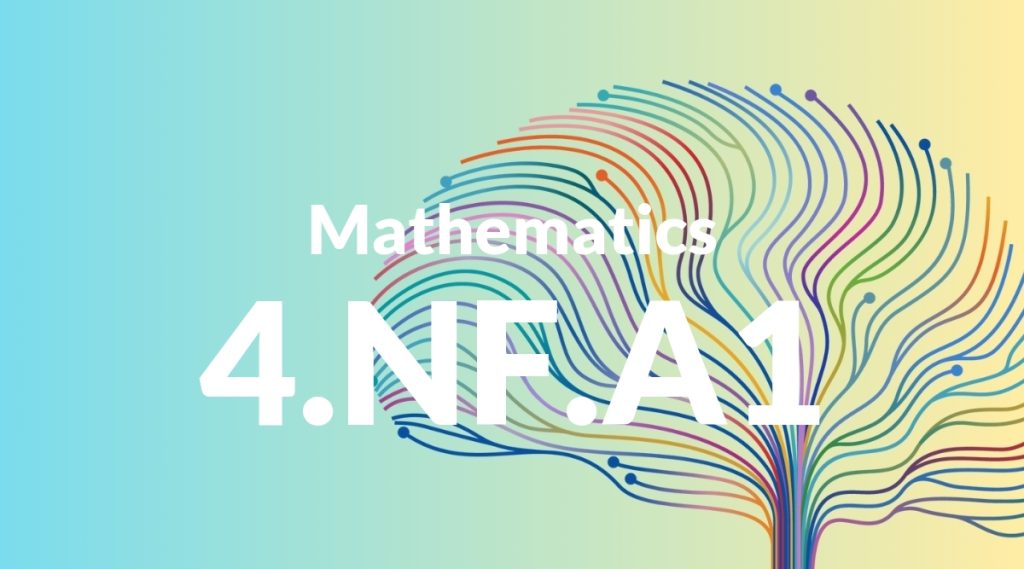Standard: 4.NF.A1 – Explain why a fraction a/b is equivalent to a fraction (n × a)/(n × b) by using visual fraction models, with attention to how the number and size of the parts differ even though the two fractions themselves are the same size. Use this principle to recognize and generate equivalent fractions.
Grade level: Grade 4
Subject: Mathematics
Domain: Numbers & Operations – Fractions
Teacher Overview
This standard focuses on helping students understand the concept of equivalent fractions. By using visual fraction models, students will learn that multiplying the numerator and denominator by the same number does not change the value of the fraction. This foundational understanding is crucial for future work with fractions, including comparing, adding, and subtracting fractions. Students should be familiar with basic fractions and have experience using visual models to represent fractions. They should understand that fractions represent parts of a whole.
By mastering this standard, students will be equipped to compare and operate with fractions, laying the groundwork for more complex mathematical concepts involving fractions in higher grades.
Common Misconception 1
Some students may mistakenly believe that multiplying both the numerator and the denominator by the same number changes the value of the fraction. This misconception arises from a lack of understanding of the relationship between the parts and the whole in a fraction.
Intervention 1
To address this misconception, use visual fraction models to show that while the number of parts increases, the size of each part decreases proportionally, keeping the overall value of the fraction the same.
Common Misconception 2
Another common misconception is that fractions with different numerators and denominators cannot be equivalent. This misunderstanding can be attributed to students’ focus on the numbers themselves rather than their relationship.
Intervention 2
Use examples of equivalent fractions with visual models and number lines to demonstrate how different fractions can represent the same value. Encourage students to find multiple equivalent fractions for a given fraction.
Prerequisite Knowledge
Students should understand the basic concept of fractions as parts of a whole and be able to identify and create simple fractions. They should also have experience with visual fraction models, such as fraction bars or circles.
Subsequent Knowledge
After mastering this standard, students will be able to compare fractions with different numerators and denominators, add and subtract fractions with like denominators, and solve real-world problems involving fractions.
Instructional Activities
- Use fraction bars to show equivalent fractions.
- Create visual fraction models with paper folding.
- Use number lines to find and compare equivalent fractions.
- Play matching games with equivalent fractions.
- Solve real-world problems involving equivalent fractions.




